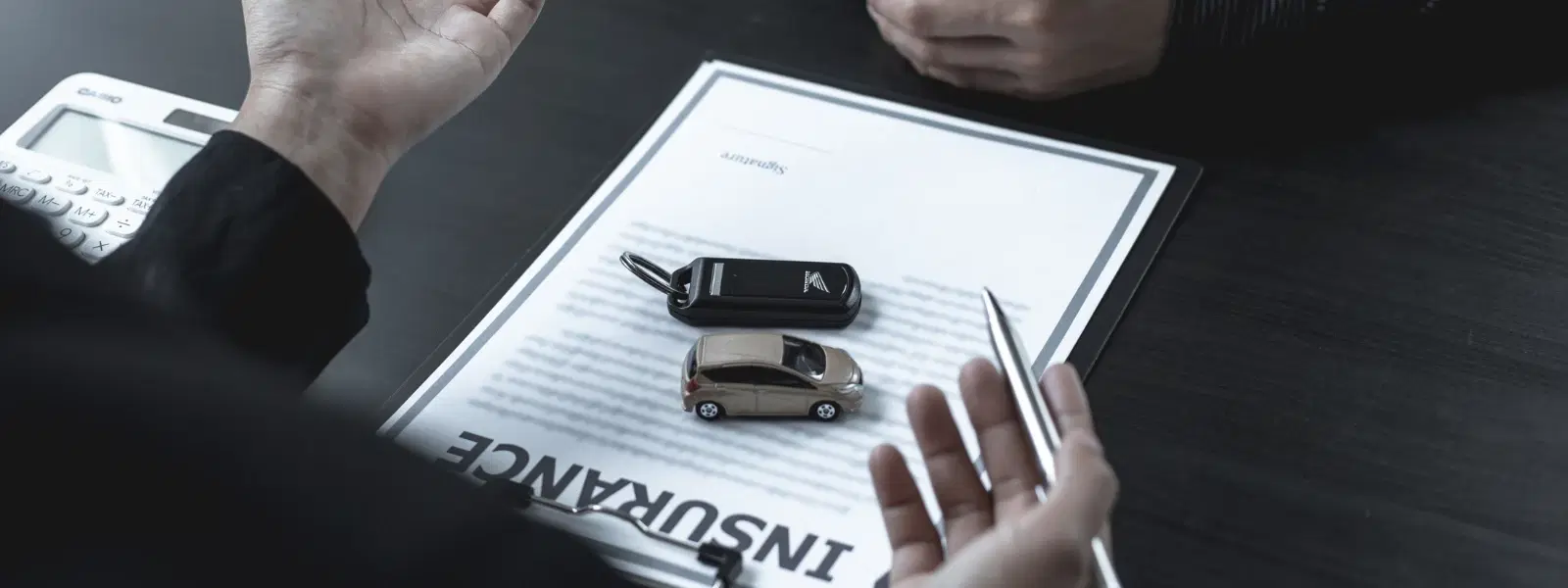
Insurance
•04 min read

Imagine being on the road and encountering unexpected damage to your vehicle. Such events may be due to accidents or natural occurrences. In these situations, Own Damage insurance acts as a protective measure, addressing repair expenses and assisting with unforeseen costs. This post explains the essentials of car insurance own damage, how it typically protects your investment, and the factors generally considered when purchasing or renewing a policy.
Own Damage insurance is generally designed to cover repair or replacement expenses when a vehicle is affected by events such as accidents, theft, fire, natural calamities, and man-made incidents like riots or vandalism. Unlike third-party liability insurance, which typically focuses on damage to others, Own Damage insurance is centered on safeguarding your own vehicle.
This type of coverage typically provides financial protection by addressing repair costs that might otherwise result in significant expenses. Car owners who wish to protect their vehicle often find that such coverage helps to manage costs arising from unexpected damage.
While third-party liability insurance is required under the Motor Vehicles Act of 1988, Own Damage insurance is optional. It is generally recommended for those seeking comprehensive protection against repair expenses due to various unforeseen events.
Own Damage insurance typically covers scenarios including:
Accidental damage to the vehicle
Theft of the vehicle
Fire or explosion incidents
Damage from natural disasters such as floods and earthquakes
Man-made incidents including riots or vandalism
This coverage usually ensures that if your vehicle is stolen or declared a total loss due to severe damage, the insurer pays an amount equivalent to the vehicle's Insured Declared Value (IDV), which represents its current market value.
Typically, Own Damage insurance does not cover:
General wear and tear or ageing
Mechanical or electrical breakdowns
Damages resulting from illegal actions such as driving under the influence or without a valid license
Consequential damages, for example, engine issues resulting from water ingress
Damage occurring outside the geographical area defined in the policy

Several add-on covers can be included with Own Damage insurance to further enhance protection. These typically include Zero Depreciation Cover, Engine Protection Cover, Consumables Cover, Roadside Assistance Cover, and Key Replacement Cover. For instance, the Zero Depreciation add-on generally eliminates deductions related to wear and tear during claim settlements, allowing for a higher claim settlement amount.
Premium amounts for Own Damage insurance are generally influenced by several factors such as the vehicle’s Insured Declared Value (IDV), which reflects its current market value. Other factors include the age of the vehicle—with older vehicles usually attracting lower premiums due to depreciation—the geographical location, and the vehicle’s engine capacity.
In practice, the process typically begins with the insurer determining the IDV of the vehicle. A specific premium rate is then applied to this value. Any applicable discounts, for example from a No Claim Bonus, along with charges for any selected add-ons, are incorporated to arrive at the final premium. This is a simplistic indication.
You can often manage premium costs by adopting several practical strategies. These may include opting for a higher deductible, maintaining a claim-free record to benefit from a No Claim Bonus, and reviewing available policies online to identify competitive own damage car insurance price rates. Premiums can be paid on a monthly, annual, quarterly, half-yearly options or one-time basis, depending on the plan terms.
The process of purchasing Own Damage insurance is generally straightforward. Begin by researching available policies online and selecting a plan that meets your coverage needs including any desired add-ons. Provide the necessary vehicle and personal information, proceed with payment, and then receive your policy document electronically or in print.
Timely renewal is important to ensure continuous protection. Typically, you should review your current policy along with any updates to your vehicle details, complete the renewal application, and pay the required premium. The process is usually streamlined and can often be completed online, helping to avoid gaps in coverage.
The basic documents generally required for renewing an Own Damage policy include the previous policy document, the vehicle registration certificate, and a valid proof of personal identification.

It is important to note that Own Damage insurance typically focuses on protecting your vehicle, whereas third-party insurance covers damage you may cause to others. Although the latter is legally required, Own Damage insurance is generally an additional measure to cover your own repair expenses.
Zero Depreciation, while often mentioned alongside Own Damage insurance, is not a standalone policy. It is an add-on that can be included to ensure that, during claim settlement, depreciation deductions are eliminated, which may lead to a higher claim settlement amount.
Some policies might include bundled offers, such as a combination of a one-year Own Damage plus a multi-year third-party package. These variations are generally designed with diverse policyholder requirements in mind. Coverage, inclusions, exclusions, benefits, and terms vary by the specific plan chosen. Refer to policy documents for details.
Own Damage insurance typically covers the repair costs for a vehicle if it is damaged due to accidents, theft, fire, or natural and man-made events.
No, Own Damage insurance is optional, while third-party liability insurance is required under the law.
Premiums are generally determined based on factors including the vehicle’s Insured Declared Value, age, geographical location, engine capacity, and any additional add-ons selected. This is a simplistic indication.
This add-on typically ensures that claims are settled at the full insured value by eliminating depreciation deductions on parts during repairs.
Yes, the renewal process is generally straightforward and can often be completed online with the necessary documents and updated vehicle details.
Own Damage insurance generally plays a significant role in addressing repair costs due to incidents such as accidents, theft, fire, and natural disasters. By understanding what is typically covered and the general method of premium calculation, you may be better positioned to make informed decisions about protecting your vehicle. Coverage, inclusions, exclusions, benefits, and terms vary by the specific plan chosen. Refer to policy documents for details.